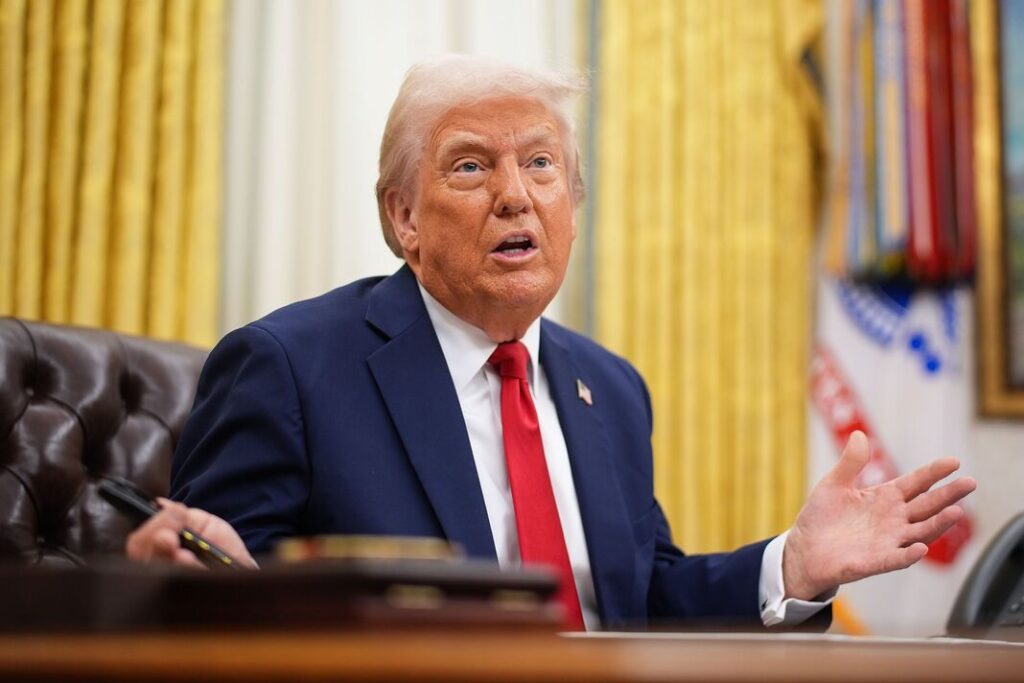President Donald Trump planned to impose new reciprocal tariffs on global trading partners on Wednesday. This action would disrupt decades of rules-based trade. It would also threaten cost increases and likely trigger retaliation from all sides.
Details of Trump’s “Liberation Day” tariff plans were still being finalized. They were closely guarded ahead of a White House Rose Garden announcement ceremony scheduled for 4 p.m. Eastern Time (2000 GMT).
The new duties will take effect immediately after Trump announces them, according to White House spokesperson Karoline Leavitt, who said this on Tuesday. A separate 25% global tariff on auto imports will take effect on April 3.
For weeks, Trump stated his reciprocal tariff plans aim to equalize U.S. tariff rates with those charged by other countries. He also wants to counteract their non-tariff barriers that disadvantage U.S. exports. The format of the duties remained unclear, but there were reports Trump was considering a 20% universal tariff.
A former Trump first-term trade official told Reuters that Trump was more likely to impose comprehensive tariff rates on individual countries at somewhat lower levels.
The former official added that the number of countries facing these duties would likely exceed the approximately 15 countries. Treasury Secretary Scott Bessent had previously said the administration was focused on those due to their high trade surpluses with the U.S.
Bessent told Republican House of Representatives lawmakers on Tuesday that the reciprocal tariffs represent a “cap” of the highest U.S. tariff level that countries will face. According to Republican Representative Kevin Hern, those tariffs “could go down if they meet the administration’s demands.”
Ryan Majerus, a former Commerce Department official, said a universal tariff would be easier to implement given a constrained timeline. It may generate more revenue, but individual reciprocal tariffs would be more tailored to countries’ unfair trade practices.
“Either way, the impacts of today’s announcement will be significant across a wide range of industries,” said Majerus, a partner at the King and Spalding law firm.
In just over 10 weeks since taking office, the Republican president has already imposed new 20% duties on all imports from China over fentanyl. He fully restored 25% duties on steel and aluminium, extending these to nearly $150 billion worth of downstream products. A month-long reprieve for most Canadian and Mexican goods from his 25% fentanyl-related tariffs also are due to expire on Wednesday.
Administration officials have said that all of Trump’s tariffs, including prior rates, are stacking. So, a Mexican-built car previously charged 2.5% to enter the U.S. would be subject to both the fentanyl tariffs and the autos sectoral tariffs, for a 52.5% tariff rate — plus any reciprocal tariff Trump may impose on Mexican goods.
Growing uncertainty over the duties is eroding investor, consumer and business confidence. This situation could slow activity and drive up prices.
Economists at the Federal Reserve Bank of Atlanta said a recent survey showed corporate financial chiefs expected tariffs to push their prices higher this year. They also expected that it would cut into hiring and growth.
Rattled investors have sold stocks aggressively for more than a month. It wiped nearly $5 trillion off the value of U.S. stocks since mid-February. Wall Street ended mixed on Tuesday with investors stuck in limbo awaiting details of Trump’s announcement on Wednesday.
Trading partners from the European Union to Canada and Mexico have vowed to respond with retaliatory tariffs and other countermeasures. Even as some have sought to negotiate with the White House.
Canadian Prime Minister Mark Carney and Mexican President Claudia Sheinbaum spoke on Tuesday about Canada’s plan to “fight unjustified trade actions” by the U.S., Carney’s office said.
“With challenging times ahead, Prime Minister Carney and President Sheinbaum emphasized the importance of safeguarding North American competitiveness while respecting the sovereignty of each nation,” Carney’s office said in a statement.
U.S. companies say a “Buy Canadian” movement is already making it harder for their products to reach that country’s shelves.
Trump has argued that American workers and manufacturers have been hurt for decades by free-trade deals. They have lowered barriers to global commerce and fueled the growth of a $3 trillion U.S. market for imported goods.
The explosion of imports has come with what Trump sees as a glaring downside: Massively imbalanced trade between the U.S. and the world, with a goods trade deficit that exceeds $1.2 trillion.
Economists warn his remedy – hefty tariffs – would raise prices at home and abroad and hammer the global economy. According to the Yale University Budget Lab, “a 20% tariff on top of those already imposed would cost the average U.S. household at least $3,400.”
Click here for more World news.


